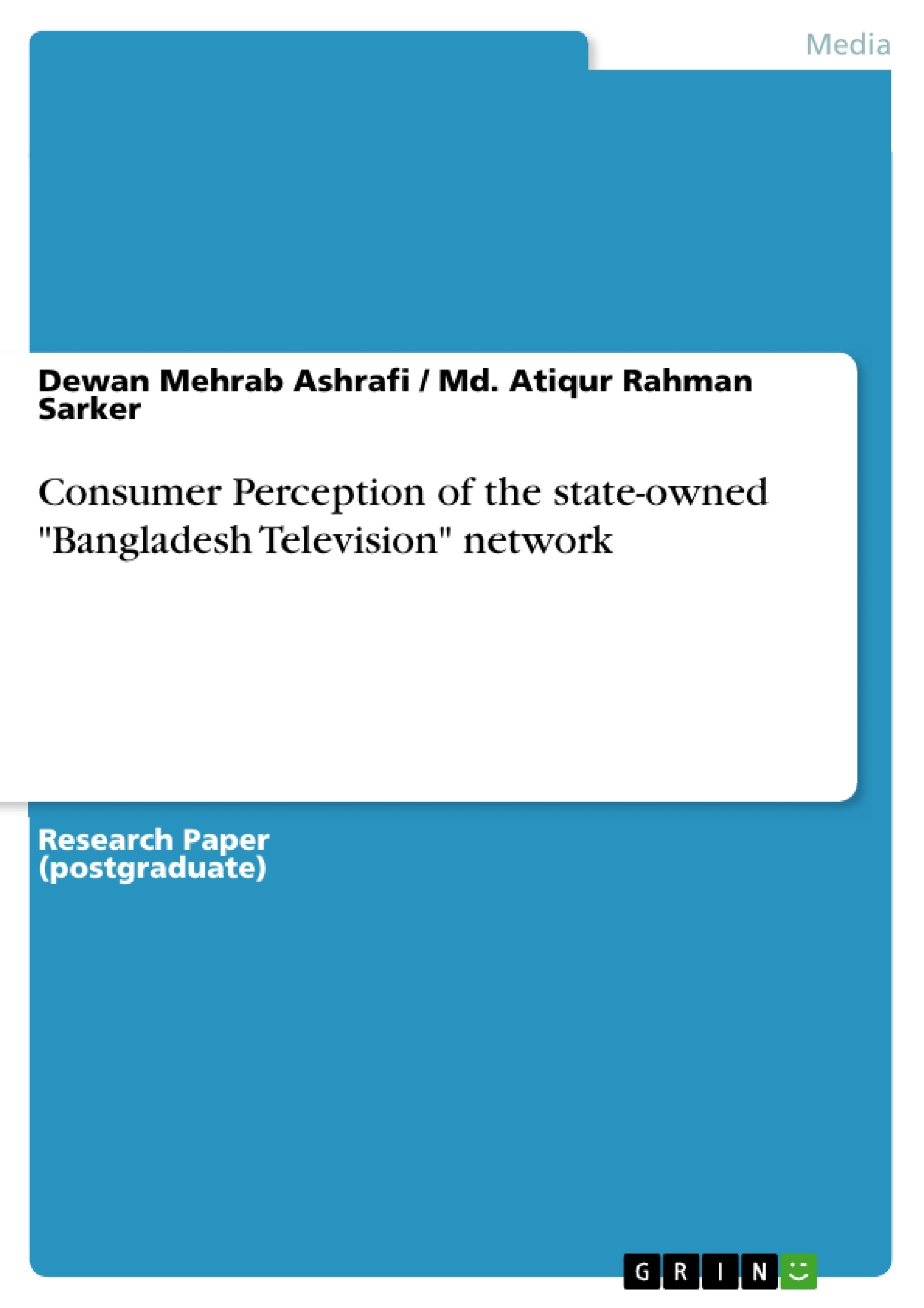This study aimed to specify the factors affecting consumer’s perception towards Bangladesh Television. Identified factors were : entertainment, technology, information and program form secondary data analysis (Appendix). The industry expert helped to clarify and understand other factors as well. Primary data were obtained through survey questionnaire.
Paired T test has been carried out to find out the accuracy of the hypothesis. Regression model has been used to find out if the independent variables have significant relationship with the dependent variable. From data analysis, 20-factors were found influencing the dependent variable, and the data was from the questionnaire which was completed by different people of different ages, gender, occupation, location.
Frequencies, crosstabs, paired t-test, regression analysis and correlation were used for data analysis. This analysis showed that 20 of the independent variables influences the dependent variable. From the regression analysis, it has been found that the value of R square is 0.934. That means independent variables have 93% impact over the dependent variable. In other words, the dependent variable can be influenced 93% by the independent variables. Adjusted R square is .934 which is close to R square.
Table of Contents
- Background
- Theoretical Framework
- Research problem
- Approach to the problem
- Research Design
- Data Analysis
- Finding, Hypothesis, and Results
- Frequency
- Hypothesis
- Correlation
- Recommendation
- Limitation and direction for future research
- Conclusion
- Appendix
Objectives and Key Themes
This study aimed to identify the factors influencing consumer perception of Bangladesh Television (BTV). It investigates the reasons behind BTV's declining viewership in the face of increasing media competition.
- Impact of competing media on BTV viewership
- Technological limitations of BTV compared to competitors
- Influence of program content and customization on viewer preference
- The role of government bias in shaping public perception of BTV
- Effectiveness of BTV's promotional strategies
Chapter Summaries
Background: This chapter sets the stage by examining the evolution of television in Bangladesh, highlighting the significant shift from BTV's dominance in the 80s and 90s to the current landscape of diverse media options. It emphasizes the challenges BTV faces due to the increased accessibility of various media, including internet platforms and satellite channels offering both international and national content tailored to specific audiences. The chapter points out BTV's failure to adapt to changing viewer preferences and its consequent loss of viewership.
Theoretical Framework: This section lays out the theoretical underpinnings of the study, defining key concepts such as entertainment, information, and amusement within the context of television programming. It establishes the connection between these factors and consumer attitudes, setting the framework for analyzing how these elements contribute to viewers' perception of BTV. The definitions provided serve as a basis for the subsequent data analysis and interpretation of results.
Research problem: This chapter outlines the core research problem: identifying factors affecting consumer perception of BTV and understanding how these factors contribute to its declining viewership. It establishes the management and marketing decision problems—how to improve BTV's viewership and how to adapt to the changing media landscape—which guide the research methodology and data analysis.
Keywords
Perception, Bangladesh Television, Media Competition, Viewership, Program Content, Technological Advancement, Government Bias, Promotional Strategies, Paired T-Test, Regression Analysis.
Bangladesh Television Viewership: A Comprehensive Language Preview - FAQ
What is the purpose of this study?
This study aims to identify the factors influencing consumer perception of Bangladesh Television (BTV) and understand the reasons behind its declining viewership in a competitive media landscape.
What are the key themes explored in this study?
The study explores the impact of competing media, BTV's technological limitations, the influence of program content and customization, the role of government bias, and the effectiveness of BTV's promotional strategies on viewer perception and viewership.
What is the structure of this document?
The document provides a comprehensive preview, including a table of contents, objectives and key themes, chapter summaries, and keywords. It covers background information, theoretical framework, research problem, approach, research design, data analysis, findings, hypothesis testing, correlation analysis, recommendations, limitations, future research directions, and conclusions.
What are the main chapters and their content?
The Background chapter discusses the evolution of television in Bangladesh and BTV's challenges in a diverse media market. The Theoretical Framework chapter defines key concepts and establishes the connection between them and consumer attitudes. The Research Problem chapter outlines the core research question focusing on factors affecting BTV's declining viewership. Subsequent chapters detail the research methodology, data analysis, findings, and conclusions.
What methodologies were used in this study?
While not explicitly detailed in the preview, the keywords mention "Paired T-Test" and "Regression Analysis," suggesting these statistical methods were employed to analyze the data.
What are the key findings (as previewed)?
The preview doesn't provide specific findings, but it promises to cover them in the "Finding, Hypothesis, and Results" chapter.
What are the limitations of the study (as previewed)?
The limitations of the study will be discussed in the dedicated "Limitation and direction for future research" chapter.
What are the recommendations of the study (as previewed)?
The recommendations resulting from the study will be outlined in the "Recommendation" chapter.
What are the keywords associated with this study?
The keywords include: Perception, Bangladesh Television, Media Competition, Viewership, Program Content, Technological Advancement, Government Bias, Promotional Strategies, Paired T-Test, Regression Analysis.
- Citar trabajo
- Dewan Mehrab Ashrafi (Autor), Md. Atiqur Rahman Sarker (Autor), 2015, Consumer Perception of the state-owned "Bangladesh Television" network, Múnich, GRIN Verlag, https://www.grin.com/document/314596



